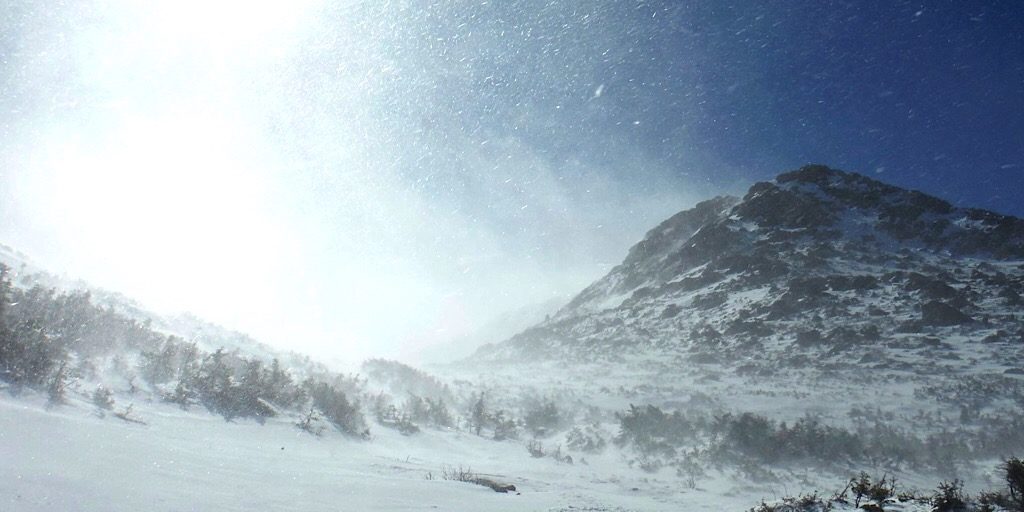
Safety is No Accident
As a general rule, people don’t venture forth into the woods on a hike looking for trouble. Trouble, in fact — if you ask many if not most victims of trips gone awry — is the furthest thing from their minds. And that is a problem in the mountains. Or can be. Ignorance may be bliss, as the saying goes, but in the mountains, ignorance can often be deadly. It’s a fact. And while this may sound harsh, mother nature doesn’t really care about you.
So how does ignorance kill? Here’s an example: A hiker heads out with temperatures at the trailhead in the seventies and rising. Hours later, ignorant to the fact that mountain weather is usually colder, unpredictable, and sometimes savage, the same hiker finds him or herself wandering lost in the fog, shivering, hypothermic from the wind driven drizzle and temperatures that are now in the low fifties. It’s already a bad situation. And getting worse. The same ignorance and lack of experience that got this person to this point also means the same hiker, ignorant to mountain dangers, unaware of even these five fundamentals, likely won’t have the necessary proper clothing layers or other important gear.
Relying on Luck
 So how can this be avoided? Well, quite honestly, it may be avoided quite easily. Most people get by simply by being lucky, first of all. Some others actually plan by the doing little things like looking at the forecast and bringing a layer and a water bottle — just in case. Foresight. But they, too, also rely on some luck. If you’re one to roll the dice and take your chances, or hoping you’re one of the lucky planners, there’s nothing more for you to do here. Good luck up there. If you want to get by on more than luck and good looks, however, keep reading.
So how can this be avoided? Well, quite honestly, it may be avoided quite easily. Most people get by simply by being lucky, first of all. Some others actually plan by the doing little things like looking at the forecast and bringing a layer and a water bottle — just in case. Foresight. But they, too, also rely on some luck. If you’re one to roll the dice and take your chances, or hoping you’re one of the lucky planners, there’s nothing more for you to do here. Good luck up there. If you want to get by on more than luck and good looks, however, keep reading.
Some folks won’t avoid bad luck — not most, but some — aren’t lucky at all. They aren’t able to dodge that bullet, so to speak, whether it be a weather situation, injury, navigational challenge, darkness, illness, or any of myriad other possibilities. Even then, of those unlucky ones who have to deal with some sort of issue in the mountains, the vast majority still thankfully come out alive, edging that much closer to earning their degree from the School of Hard Knocks. But, man, experiential wisdom is hard earned, sometimes proving itself a cruel master. Avoidance is preferred.
So, if you don’t want to rely on luck to avoid the dangers — some of which you know nothing about — and you aren’t real keen on the idea of dying while you try gaining experience, what do you do? Surely more options exist.
Doing Some Research
 Nowadays our ability to access information is almost beyond comprehension. Nowadays if you want information you can go to Google and YouTube, or visit forums, or join Facebook groups. It’s easy, right? Well, yes and no. The problem is there is so much information, filtering becomes necessary. Not only to avoid information overload, but not all information is created equal. Online you can find both good and bad advice. You want to filter it out, too.
Nowadays our ability to access information is almost beyond comprehension. Nowadays if you want information you can go to Google and YouTube, or visit forums, or join Facebook groups. It’s easy, right? Well, yes and no. The problem is there is so much information, filtering becomes necessary. Not only to avoid information overload, but not all information is created equal. Online you can find both good and bad advice. You want to filter it out, too.
A deeper problem also exists in that being online means not being outside. And those drawn to the mountains are automatically the type of people who like or are at least intrigued by these spaces and mostly prefer to be in them. Or think they do. Sitting at home in front of a computer can be a great way to expose oneself to a metric ton of information, but many crave the experiential part. The dangerous part. To them the mountains are calling and they must go — even though they don’t know a John Muir.
Taking Related Classes
 Another option is to take formal classes. The beauty of doing this is two-fold. You’re outside learning through both hands on experience as well as through the experience of the expert instructors. These people did the research for you, or got lucky or unlucky on your behalf. In any case, they can teach you in a fun, rewarding way, maximizing your asorbtion of practical, properly filtered data.
Another option is to take formal classes. The beauty of doing this is two-fold. You’re outside learning through both hands on experience as well as through the experience of the expert instructors. These people did the research for you, or got lucky or unlucky on your behalf. In any case, they can teach you in a fun, rewarding way, maximizing your asorbtion of practical, properly filtered data.
The type of classes or programs to take range from general offerings like hiking introduction, CPR/AED, etc., to more specifics options like river crossing skills, camp craft for backpacking, winter and mountaineering skills, wilderness navigation, and wilderness first aid. These are all great courses that provide a significant advantage to their students placing them ahead of their unschooled peers by several seasons.
Hiring a Hiking Guide
 A more direct and personal way to get into the mountains while getting the experience you want and need, all while you avoid getting into trouble, is to simply hire a guide. A hiking guide will ensure you are properly prepared for the endeavor at hand. The guide will also know how to deal with the weather, and when to throw in the towel. And as an added value, a good guide will also be able to delve into the history of the area, point out sign of the fauna, and define some of the flora.
A more direct and personal way to get into the mountains while getting the experience you want and need, all while you avoid getting into trouble, is to simply hire a guide. A hiking guide will ensure you are properly prepared for the endeavor at hand. The guide will also know how to deal with the weather, and when to throw in the towel. And as an added value, a good guide will also be able to delve into the history of the area, point out sign of the fauna, and define some of the flora.
To locate a guide, simply go online and do a search for reputable guides in the area you want to explore. Check out their reviews, the services they offer, and their pricing knowing, however, that you will get what you pay for and that not all services are created equal. Beware free services or group sites. While we won’t mention names, many are poorly organized and some of the “leaders” are relying on luck themselves. That said, it’s probably better than venturing off alone. There is safety in numbers.
Common-Sense and Imagination
 While not trying to sound negative — and we always hope for the best, really — one way to avoid trouble is to plan for the worst remembering that safety is no accident. Figure on the toughest day with the worst conditions and you’ll be far more prepared, at least mentally. If you can imagine what may go wrong, which is possible with a little common-sense and a basic understanding of the outdoors, try to prepare for it. And the kicker is, in doing so, it likely won’t go wrong. It’s a twist to Murphy’s Law. It rains only when you forget your umbrella, right? It’s true for many.
While not trying to sound negative — and we always hope for the best, really — one way to avoid trouble is to plan for the worst remembering that safety is no accident. Figure on the toughest day with the worst conditions and you’ll be far more prepared, at least mentally. If you can imagine what may go wrong, which is possible with a little common-sense and a basic understanding of the outdoors, try to prepare for it. And the kicker is, in doing so, it likely won’t go wrong. It’s a twist to Murphy’s Law. It rains only when you forget your umbrella, right? It’s true for many.
If you’ve read this article, there is hope for you and those who hike with you. It’s the one who doesn’t read it or doesn’t even look for it that will usually run into trouble — or get us into trouble. Those who have a HikeSafe Card (in New Hampshire), aren’t generally the ones needing it because they are thinking ahead. This can be you. Or, do you feel lucky? Well do you?
This is a reprint of an article we originally produced for HikingandFishing.com.
Select photos courtesy of Pexels.com.
